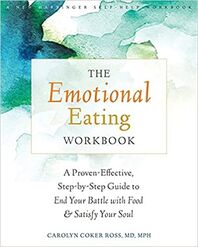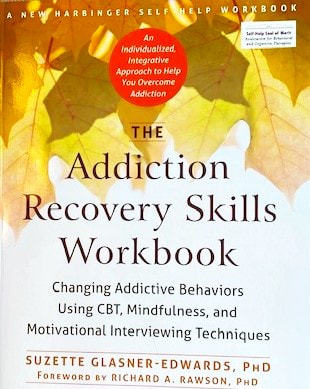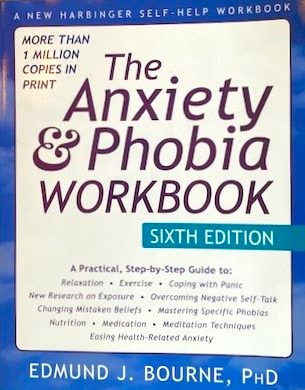The Recovery Plan
"I have been developing and using these strategies, methods, and links throughout the course of my 34-year recovery journey. This is what has worked for me and scores of others. Look around the site and try things out. Incorporate the methods that are effective for you into your own recovery lifestyle. Section 4 offers you the opportunity to download some workbooks and handouts. Save this site to your smartphone or tablet for easy mobile access.
For those of you in our intensive outpatient program (IOP), the daily self-report and personal inventory forms, along with the interactive workbooks are linked to your counselor’s phone in real time. This technology allows your counselor to receive reports and workbook submissions daily, and to reply if needed. Basically, you are connected virtually with the counselor for the entire treatment program." Tom Diffenderfer LADAC II, QCS, CAIP
For those of you in our intensive outpatient program (IOP), the daily self-report and personal inventory forms, along with the interactive workbooks are linked to your counselor’s phone in real time. This technology allows your counselor to receive reports and workbook submissions daily, and to reply if needed. Basically, you are connected virtually with the counselor for the entire treatment program." Tom Diffenderfer LADAC II, QCS, CAIP
1. The Brain Disease of Substance Use Disorder
Tom Diffenderfer LADAC II, QCS, CAIP presents a video on the brain disease of substance use disorder, its chronic and progressive nature and specific criteria used to determine the severity of the illness. A thorough explanation of the medical aspects in an easy-to-understand format.
2. Self-Report and Personal Inventory
The Self-Report is an effective recovery tool for maintaining awareness of the here and now. Maintaining awareness of what is unfolding during each twenty-four hours helps us avoid excessive guilt about the past and worry about the future. Repeating the self-report and personal inventory on a daily basis, helps add structure to our lives. We can learn to observe healthy or destructive patterns beginning to develop. Then, correct mistakes and change behaviors if needed. Above all else, maintaining focus on the present helps us avoid feeling overwhelmed by the accumulation of stress and anxiety. When you wake up, take some time to identify your feelings and thoughts. Follow this by deciding the things you would like to do from now until you go to sleep. Now document this information on the Self-Report form below and submit.
Complete the day with a recap. Include challenges and coping strategies used to meet challenges. Also include any enjoyable activities and achievements. This helps to improve accountability and increase positive feelings about yourself. Enter your thoughts on the personal inventory form and click submit.
Complete the day with a recap. Include challenges and coping strategies used to meet challenges. Also include any enjoyable activities and achievements. This helps to improve accountability and increase positive feelings about yourself. Enter your thoughts on the personal inventory form and click submit.
3. Interactive Workbooks
Integrating the workbooks curriculum with our interactive submission forms, provides our counselors the opportunity to assess your recovery progress on a daily basis. Counselors can see the work you have completed in real time on their smartphones and reply with comments if necessary. The interactive workbooks along with the daily self-report submissions and video counseling sessions combine to take the telehealth experience to another level.
4. Download a copy
Here you can download copies of the workbooks and handouts for future use.
|
|
| ||||||||||||||||||
|
|
| ||||||||||||||||||
|
|
| ||||||||||||||||||
|
|
| ||||||||||||||||||
|
| ||||||||||||
5. Video Counseling
|
1. Call or text us to schedule a day and time for the session. You will receive our confidential zoom room number. 2. Click on the zoom video counseling button below. 3. Enter the counselor's zoom room number when prompted. 4. Payment can be made during the session with a debit or credit card. |
6. Help for Using Thoughts
|
Sometimes the thought will occur that you would really like or need a drink or drug. You may even tell yourself that you can handle it now. Or this time will be different. Click on this 5-minute relaxing audio and receive help to manage the thought. Use this as often as necessary as you continue to create healthy new neural pathways. |
7. Enjoyable Sober Activities
Feed the soul, pamper yourself, and add passion and fun to recovery.
It is usually not enough to just stop abusing the drugs or alcohol. An addicted person can sometimes go days, weeks, even months without abusing drugs. They accomplish this with will power alone. However, when they begin using again, most will pick up where they left off. The addicted person quickly losing control of how much and how often they use.
A key element of maintaining long term sobriety is learning how to have fun and enjoy life again without abusing alcohol or drugs. When the drug misuse is stopped, the brain continues to heal. It begins producing more of the pleasure chemicals that are necessary to achieve natural highs. The goal is to not just achieve sobriety. It is more about developing a quality recovery lifestyle. Think back to when you were a young child. Do you remember playing games with your friends, getting lost in an imaginary world? Or the excitement on the night before Christmas thinking about the joy that awaits you in the morning. The thrill of that first kiss or when your team wins the championship are all examples of natural highs. Our brain chemistry provides us with a vast array of pleasurable experiences and feelings. We come completely equipped with everything we need to enjoy life. As our drug misuse continues to progress, we begin to develop the belief that we need an external substance or drug to experience joy. We can become so lost in our addiction that we feel we cannot survive without our substance. But that is the big lie. In truth, our brains will heal, and we will return to enjoying life naturally again.
As addiction progresses, the process of getting and using the drugs becomes more and more of an obsession. This often robs us of our other interests and passions. There are many things to consider as you learn to develop quality sobriety. One of them is balance. Trying to achieve a healthy balance between work and play, as well as alone time and family, can be challenging. This is also the time to renew old hobbies and interests or acquire new ones. Rekindling the passion and meaning in life can be a wonderful journey. Fishing, camping, playing a musical instrument, travel, sewing, biking, sports, church, support groups, volunteering to help others, date night with your partner, gardening, photography, and taking a class are just a few of the endless number of things that people recovering from addiction enjoy. Be careful not to fall into the rut of just working and sleeping.
It is usually not enough to just stop abusing the drugs or alcohol. An addicted person can sometimes go days, weeks, even months without abusing drugs. They accomplish this with will power alone. However, when they begin using again, most will pick up where they left off. The addicted person quickly losing control of how much and how often they use.
A key element of maintaining long term sobriety is learning how to have fun and enjoy life again without abusing alcohol or drugs. When the drug misuse is stopped, the brain continues to heal. It begins producing more of the pleasure chemicals that are necessary to achieve natural highs. The goal is to not just achieve sobriety. It is more about developing a quality recovery lifestyle. Think back to when you were a young child. Do you remember playing games with your friends, getting lost in an imaginary world? Or the excitement on the night before Christmas thinking about the joy that awaits you in the morning. The thrill of that first kiss or when your team wins the championship are all examples of natural highs. Our brain chemistry provides us with a vast array of pleasurable experiences and feelings. We come completely equipped with everything we need to enjoy life. As our drug misuse continues to progress, we begin to develop the belief that we need an external substance or drug to experience joy. We can become so lost in our addiction that we feel we cannot survive without our substance. But that is the big lie. In truth, our brains will heal, and we will return to enjoying life naturally again.
As addiction progresses, the process of getting and using the drugs becomes more and more of an obsession. This often robs us of our other interests and passions. There are many things to consider as you learn to develop quality sobriety. One of them is balance. Trying to achieve a healthy balance between work and play, as well as alone time and family, can be challenging. This is also the time to renew old hobbies and interests or acquire new ones. Rekindling the passion and meaning in life can be a wonderful journey. Fishing, camping, playing a musical instrument, travel, sewing, biking, sports, church, support groups, volunteering to help others, date night with your partner, gardening, photography, and taking a class are just a few of the endless number of things that people recovering from addiction enjoy. Be careful not to fall into the rut of just working and sleeping.
8. Deep Relaxation, Hypnotherapy & PMR
Counselors and therapists have been recommending various forms of guided imagery, progressive muscle relaxation (PMR), and meditation for many years. It is well known that practicing this type of deep relaxation has emotional, physical and spiritual benefits. Bringing your body into a deep state of calm on a regular basis helps reduce anxiety, manage stress, and reduce feelings of being overwhelmed. Can also be used to induce sleep.
What others are saying
"Cured a migraine better than medication." I felt a migraine coming on and laid down with an ice pack, eye mask, and zoned out to this cd. The migraine then dissipated throughout the day instead of turning evil on me. FOUR STARS. I also use it for insomnia. I have many other relaxation CDs, this hypnosis one works the best. Thank you, Tom Diffenderfer. Review on amazon.com for the album PMR, Hypnotherapy, and Acoustic Guitar. June 04, 2015
"5 out of 5 stars, very helpful " I suffer from restless leg syndrome, and this soothes me so I can sleep. I'm also Bipolar and this really eases my tension and anger! Wonderful acoustic guitar music. Progressive muscle relaxation with guided visualization. Perfect length. Highly recommend, you won't be disappointed! Review on amazon.com for the album PMR, Hypnotherapy, and Acoustic Guitar, January 05, 2016
"5 out of 5 stars Amazing help with Chemo anxiety!!! " Follow Up: I have someone who is undergoing Chemo and is suffering from severe anxiety. He asked me if I still had one of those meditation recordings that we had used years ago. He has been using it every day since. He had tried everything available from Xanax, nausea meds, and smoking materials and nothing had helped. He is using these meditation recordings 2 times a day and it has been incredible. He is no longer using medication or anything else. The mind is very powerful, even with Chemo. This really works. Review on Amazon.com for the album The Four Week Relaxation Plan for unhealthy Anxiety. February 7, 2019
"5 out of 5 stars, very helpful " I suffer from restless leg syndrome, and this soothes me so I can sleep. I'm also Bipolar and this really eases my tension and anger! Wonderful acoustic guitar music. Progressive muscle relaxation with guided visualization. Perfect length. Highly recommend, you won't be disappointed! Review on amazon.com for the album PMR, Hypnotherapy, and Acoustic Guitar, January 05, 2016
"5 out of 5 stars Amazing help with Chemo anxiety!!! " Follow Up: I have someone who is undergoing Chemo and is suffering from severe anxiety. He asked me if I still had one of those meditation recordings that we had used years ago. He has been using it every day since. He had tried everything available from Xanax, nausea meds, and smoking materials and nothing had helped. He is using these meditation recordings 2 times a day and it has been incredible. He is no longer using medication or anything else. The mind is very powerful, even with Chemo. This really works. Review on Amazon.com for the album The Four Week Relaxation Plan for unhealthy Anxiety. February 7, 2019
|
Touch the picture, click the play arrow, and relax Hypnotherapy utilizes the hypnotic induction system to help the listener move into a deep state of calm. Incorporated in this guided relaxation are the sounds of moving water and therapeutic music featuring acoustic guitar. Progressive Muscle Relaxation, Hypnotherapy and Acoustic Guitar is one of our most popular albums. This album is a good starting point for someone new to guided relaxation. |
|
Touch the picture, click the play arrow and relax. Progressive muscle relaxation is a great way to help your body become deeply relaxed. The process is achieved by tensing and relaxing various muscle groups throughout the body. We refer to this as bringing the body down. Then gentle relaxing music mixed with sounds of summer rain, ease the mind into harmony with the relaxed body. |
|
Touch the picture, Click the play arrow, and sleep tight. Progressive Muscle Relaxation for Sleep / Session 1 utilizes guided PMR to achieve a deep state of calm and induce a restful night's sleep. To date this is our most popular sleep aide. Over the last several years this guided relaxation has been streamed worldwide over 131,000 times. |
9. Help with sleep / hypnotherapy
Touch the picture, click the play arrow, and pleasant dreams
We are excited to release our latest editions of hypnotherapy for sleep. We have been developing and producing guided relations for over 20 years now. This new group of guided relaxations is a combination of various methods and techniques that have been shown to be effective over the years.
Begin by choosing which version you would like to try, mountain stream or ocean. Then, lie down and make yourself comfortable, start the guided relaxation, and follow the instructions. Most people will either fall asleep before the 16-minute program is complete, or if they are still awake, they find themselves in a deeply relaxed and peaceful state of calm.
Finally, we have found that the more you use the program, the more effective it becomes as your mind and body become accustomed to the process.
Begin by choosing which version you would like to try, mountain stream or ocean. Then, lie down and make yourself comfortable, start the guided relaxation, and follow the instructions. Most people will either fall asleep before the 16-minute program is complete, or if they are still awake, they find themselves in a deeply relaxed and peaceful state of calm.
Finally, we have found that the more you use the program, the more effective it becomes as your mind and body become accustomed to the process.
10. Help with anxiety / remain calm
|
Just click the remain calm button and enter the same password you used for this site. You will be able to access a host of therapeutic strategies and educational presentations to help manage any unhealthy anxiety problems.
|
11. Walk to Wellness
|
Walk to Wellness is five up tempo songs, each recorded at a slightly faster speed than the previous one, walking in time with the music has several emotional and physical benefits. For those using a treadmill, simply set the MPH of each song according to the voice instruction on your computer or mobile phone. Or use the program outdoors with your smartphone. You will be walking right in time with the music. |
12. Discussions of a successful Suboxone Taper
Above you will find 2 in depth interviews that Tom conducted with patients that completed suboxone treatment and are doing well. After a period of suboxone maintenance, and with significant progress in their recovery lifestyle, some patients become motivated to discontinue the medicine. However, fear and uncertainty often prevent the patient from completing the medication taper. While continuing suboxone maintenance indefinitely is always an option, some will face their fears and complete the taper. If you are considering this option, these interviews with Keith and Katie offer valuable insights. Just click the button to listen.
13. Alcohol and Drug Evaluation
|
If you are seeking an evaluation for a substance abuse problem, contact your counselor to schedule an appointment. Once the session is underway, complete and submit sections 1 and 2. Your counselor will ask you a few additional questions, then review your answers, and explain the results. You will receive an email with the assessment results.
|
Helpful recovery website links (Part 2)
14. Daily Reflection
Reading a daily reflection or thought for the day, can get us off to a good start and remind us to keep our addiction in remission today. You can use inspirational thoughts for the day literature, a daily devotional, or click the link below for daily reflections from the Hazelden Betty Ford Center.
15. Recovery Support Local or Online
|
12 step recovery support meetings allow us to identify that we are not alone and offers us a chance to both receive and give help. intherooms.com is the world's largest online recovering network. You will find an extensive collection of resources to include multiple 12 step virtual meetings daily. |
16. Yoga / Stretching
In early recovery, light exercise promotes physical and emotional healing in multiple ways. Morning Cup of Yoga by Jane Goad Trechsel, is an easy, quick, and satisfying introduction to Yoga. Just click the link and follow the directions.
17. Become an Ex-Smoker
Quitting can seem overwhelming. Tobacco is part of your life and change is hard. Amazing change can happen when you have the right support and tools to guide you. EX works because it was built for you—with expert knowledge from Mayo Clinic and real tobacco users who understand the struggle and how to quit. Your path to a tobacco-free life starts with a personalized approach to quitting: your EX-Plan.
18. For Patients Prescribed Suboxone (MAT)
This website has a lot of accurate and detailed information and answers to questions concerning the brain disease of opiate use disorder, induction, long-term maintenance, how and when to taper and more.
19. Recommended Self-Help Workbooks
I have been recommending New Harbinger publishing workbooks to my patients for over 20 years now. These are basically self-help workbooks with current, accurate, information that guide you through the problem to the solution. The books are uplifting, encouraging and supportive. I have found them to be an invaluable partner on the recovery journey. You can purchase these books by clicking on the cover.
20. Alcoholics Anonymous
The 12 step programs began over 70 years ago with Alcoholics Anonymous and have grown into the largest network of recovery support groups in the world. The 12 step programs have helped literally millions of people get their addiction illness in remission and keep it there by attending their support meetings and working through the 12 steps. These two books are the original basic text and 12-step guide published by Alcoholics Anonymous. Just click on one to either read or listen.
Alcoholics Anonymous / The Big Book
Twelve Steps and Twelve Traditions
Alcoholics Anonymous / The Big Book
Twelve Steps and Twelve Traditions




















